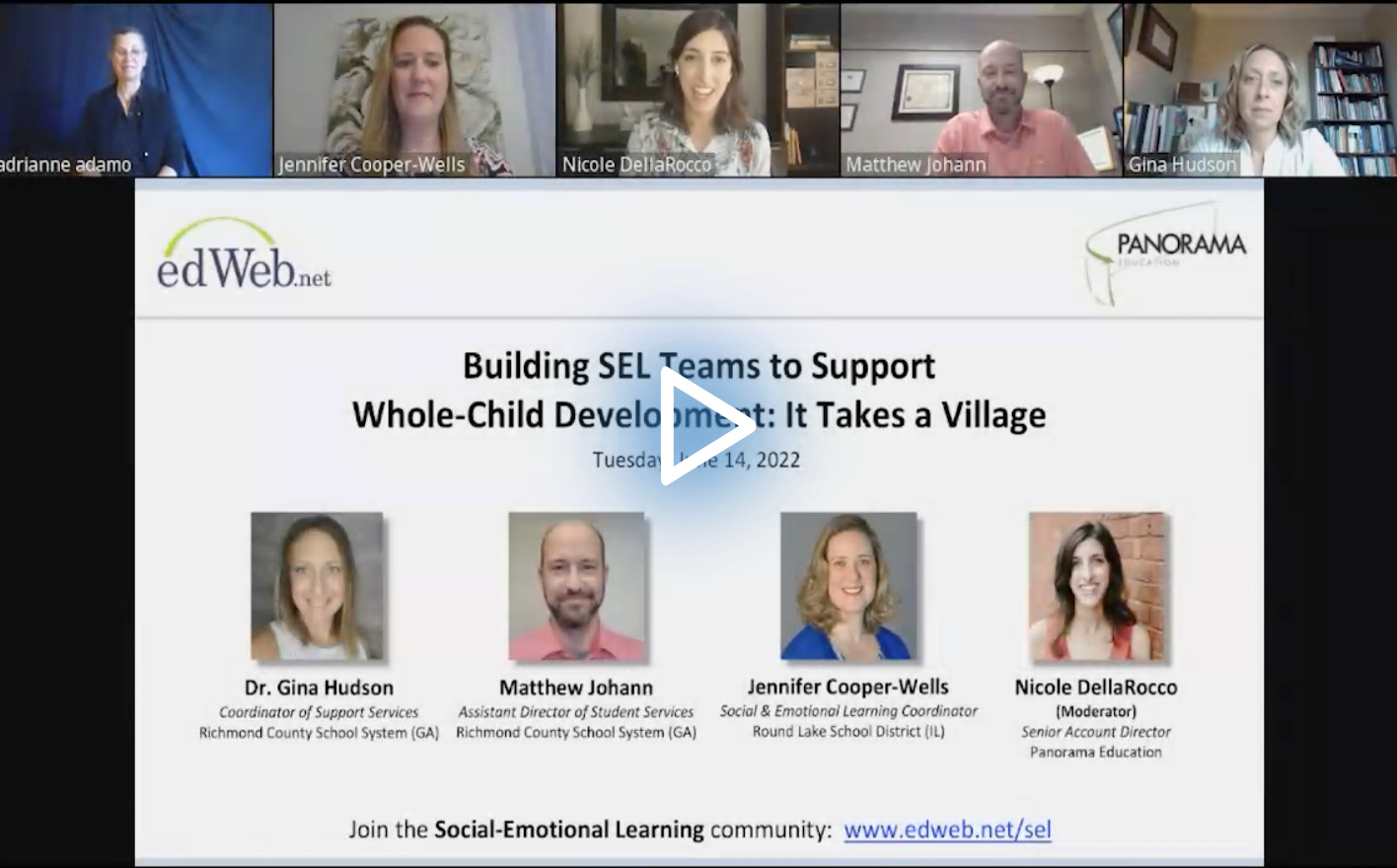Building SEL Support One Step at a Time
Watch the Recording Listen to the Podcast
While school leaders are increasingly recognizing the need to integrate social-emotional learning into the school day, they’re still getting pushback from teachers and sometimes the community. With teachers already responsible for fitting many skills into a brief period of time, adding SEL doesn’t seem possible.
During the edLeader Panel, “Building SEL Teams to Support Whole-Child Development: It Takes a Village,” the presenters discussed how they’re building a culture of SEL in their schools and the lessons they’ve learned.
- Using data to set the vision: Just as educators give students assessments at the beginning of the year to determine their proficiencies in academic skills, the presenters administered SEL screeners to measure their students’ emotional needs. Using that data, they were able to determine the students’ SEL needs, create a vision for that school year, and convince district administration to support their initiatives.
- Creating mental health teams: While the presenters’ schools had access to school counselors, it wasn’t enough. Each school building needed a dedicated team of—or access to—counselors, social workers, behavioral interventionists, etc. By having the resources for each school, the team would know the students well and be able to tailor their work to their specific needs.
- Fostering teacher buy-in: In addition, teachers needed to be a part of the mental health teams, but many were reluctant due to their current workloads. The SEL leads in each district took the time to train teachers and create lessons to show them how to embed SEL into their current curricula without sacrificing academic time. Furthermore, instead of insisting that all teachers implement SEL all at once, the presenters’ districts started with elementary schools where teachers are more accustomed to teaching social and emotional lessons. Finally, the presenters made sure to create moments for teachers to address their own SEL needs.
- Connecting SEL to student outcomes: Teachers and family members want students to be productive, well-adjusted citizens when they leave high school. The presenters focus on showing their community how SEL skills, like regulating emotions, will translate to success in college and career.
- Extending SEL lessons beyond the classroom: Just as students are encouraged to practice academic skills at home, the presenters give their families information to help them practice SEL lessons. For instance, in family newsletters, the teachers can share the questions they’re asking at circle time and have the children discuss them with their families. The presenters have also held virtual education sessions so that the families and students are using the same vocabulary.
- Measuring progress: The presenters encouraged educators to not only assess student SEL skills at the beginning of the year but to also have specific goals in place and tools to measure progress.
Most important, the presenters agreed that support for SEL must come from the district administration. This includes not only supporting SEL as part of the curriculum but providing the budget for personnel, training, and classroom resources.
Learn more about this edWeb broadcast, “Building SEL Teams to Support Whole-Child Development: It Takes a Village,” sponsored by Panorama Education.
Watch the Recording Listen to the Podcast
Join the Community
Social-Emotional Learning is a free professional learning community where educators can collaborate and share ideas, examples, and resources for incorporating social-emotional learning in the classroom.

Blog post by Stacey Pusey based on this edLeader Panel





Comments are closed.